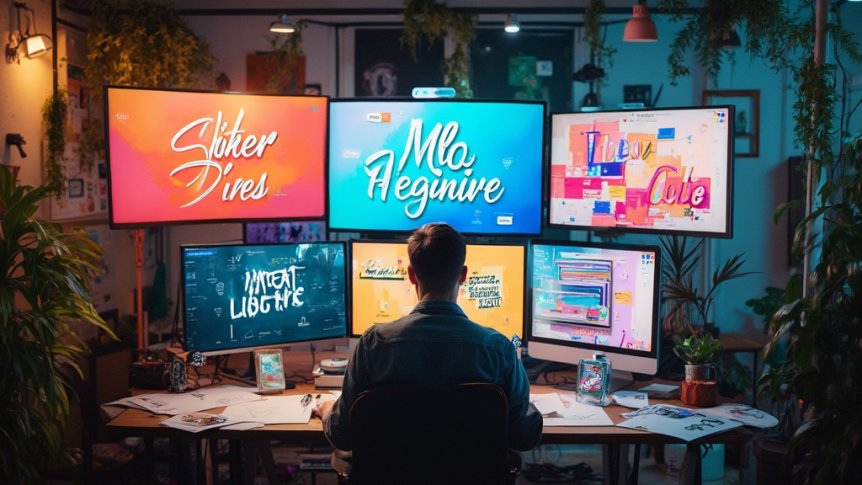Introduction
As web design evolves, 2025 promises to be a transformative year, marked by innovative visual trends that redefine user experiences. Designers are increasingly embracing unexpected elements such as:
- Floating objects
- Freeform finishes
- Bold typography
These elements create dynamic compositions that captivate audiences from the moment they land on a site. This article delves into the key trends shaping the future of web design, including:
- The rise of interactive features
- Vibrant color schemes
- A commitment to sustainable and accessible practices
By exploring these developments, businesses can better understand how to engage users effectively and enhance their online presence in a rapidly changing digital landscape.
Innovative Visual Trends Shaping Web Design in 2025
Web design in 2025 is poised to embrace the latest trends in website design by incorporating a range of innovative visual elements that challenge conventional layouts, prominently featuring unexpected floating objects and freeform finishes. These elements not only enhance the aesthetic appeal of websites but also promote a more immersive experience. As designers explore asymmetry and layering techniques, they create dynamic compositions that capture audience attention from the outset.
This shift toward sophisticated micro animations, which intelligently respond to behavior while maintaining a subtle and purposeful nature, is set to enhance interactivity. According to a UI/production designer,
we’re thinking about how things move more naturally, whether they’re on a curve or wheel instead of on a flat plane.
Such insights emphasize the shift toward fluidity in web creation, aiming to create environments that feel more engaging and responsive.
Furthermore, the increasing reliance on mobile devices for visual search is evidenced by the fact that by May 2023, Google Lens was utilized 12 billion times monthly, with 90.6% of image results originating from mobile-friendly sites. This statistic highlights the critical need for designers to prioritize mobile-optimized layouts that incorporate the latest trends in website design. Furthermore, utilizing tools such as VWO can assist in managing optimization programs, conducting user research, and enhancing online experiences, ensuring that the incorporation of innovative visual elements in web aesthetics effectively influences user experience in 2025.
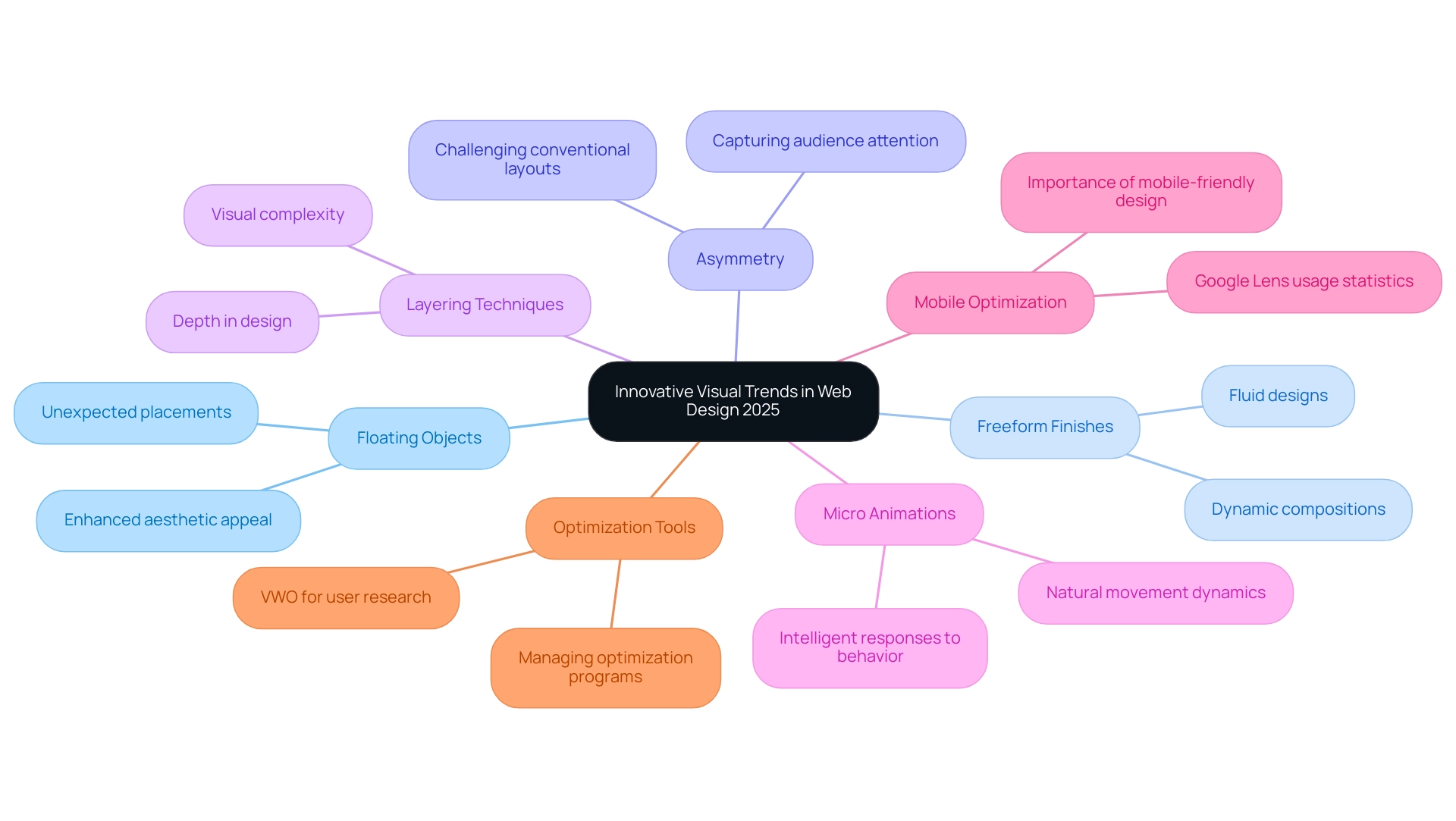
The Rise of Bold Typography and Expressive Fonts
In 2025, bold typography and expressive fonts are expected to play a pivotal role in the latest trends in website design, as creators increasingly recognize their ability to capture attention and effectively convey messages. Recent information shows that 61.5% of designers are now employing expressive typography, indicating a change in aesthetic preferences. This year, the latest trends in website design are expected to showcase a diverse range of styles, from minimalist elegance to bold impacts, catering to various brand identities.
Large, eye-catching headlines, complemented by distinctive font choices, not only bolster brand recognition but also enhance readability across various devices. The latest trends in website design promote the adoption of custom fonts and well-structured typographic hierarchies that embody a brand’s unique personality, thus rendering content more engaging and visually striking. As a result, businesses are empowered to communicate their values more clearly and forge deeper connections with their audience.
For example, Sendinblue has effectively employed bold typography in its marketing materials, illustrating how such stylistic choices can enhance engagement and brand identity. Additionally, it’s significant that 46% of individuals favor blue in website aesthetics, a hue that can inspire trust and professionalism, further impacting aesthetic approaches. Expert insights emphasize that understanding how your font selections affect perception can enhance your work and ensure your content resonates with your audience.
This strengthens the idea that bold typography is not just a stylistic option; it is a strategic component that can greatly influence brand recognition and overall audience engagement, especially in the context of the latest trends in website design.
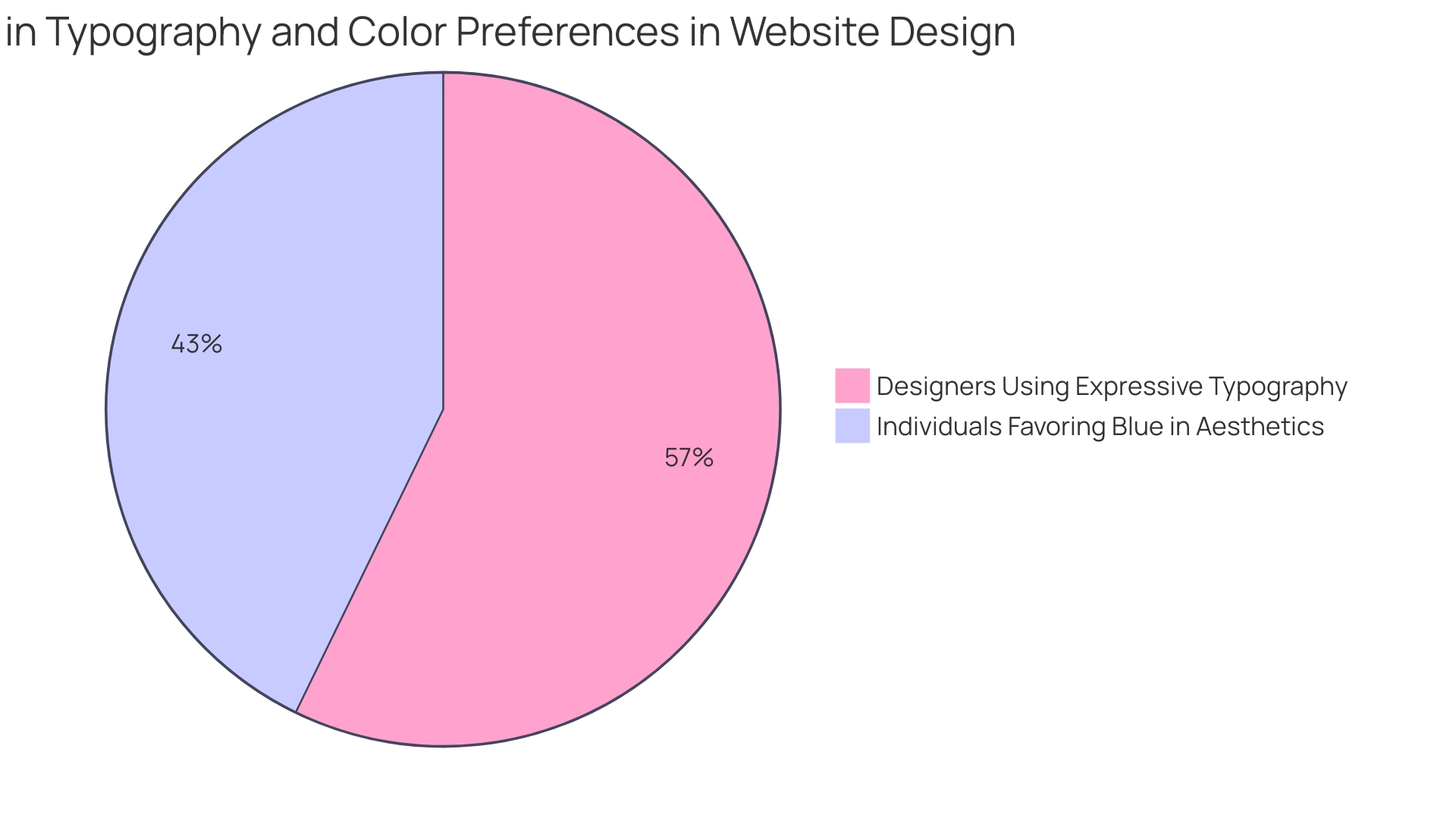
Enhancing User Engagement Through Interactive Design
In 2025, interactive creative components like scrollytelling and micro-interactions are poised to play a crucial role in improving engagement of individuals. Statistics indicate that 46% of individuals favor blue in website aesthetics, emphasizing the significance of color psychology in developing effective interactive elements. Scrollytelling, for instance, effectively transforms traditional storytelling into a visually engaging journey, captivating the audience as they scroll.
As Maria Harutyunyan states, ‘What is Sendinblue, what are the features, and finally, who is it for?’—this reflects the need for clarity and engagement in design. Meanwhile, micro-interactions provide essential feedback through subtle animations, guiding individuals seamlessly through their actions on the site.
A case study on Google Lens reveals that by May 2023, it was being used 12 billion times a month, with 90.6% of image results coming from mobile-friendly websites. This highlights the significance of mobile-friendly layouts in utilizing new technologies and improving engagement. By integrating these dynamic features, designers not only attract visitors but also align with the latest trends in website design, encouraging exploration and interaction with the content, significantly enhancing engagement levels.
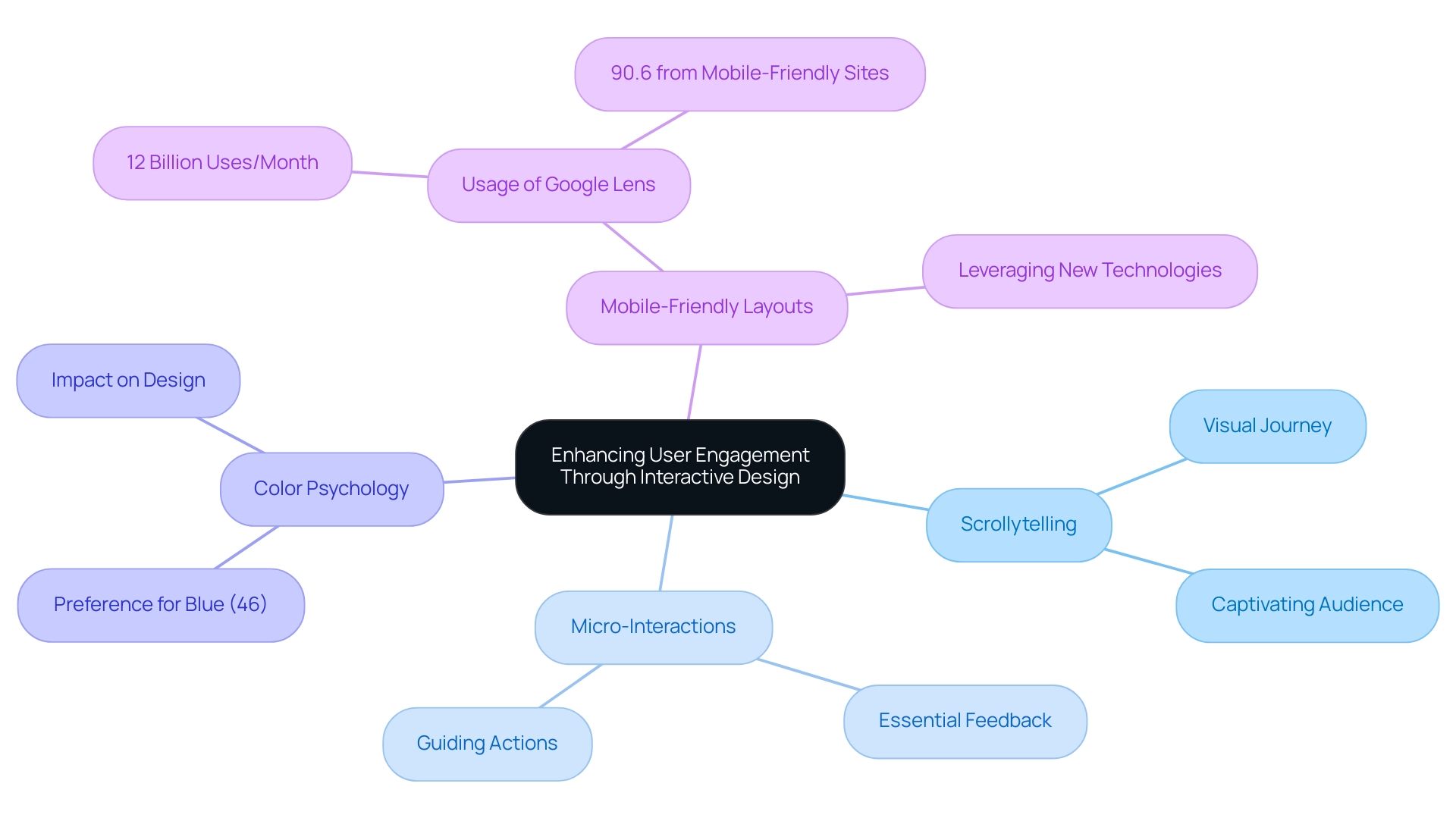
Color Trends: From Candy Pops to Gradient Schemes
As we approach 2025, the latest trends in website design are expected to embrace vibrant candy pops and sophisticated gradient schemes, captivating visitors and evoking strong emotional responses. Studies show that among internet users:
- 46% favor blue shades
- 23% choose yellow
This highlights the substantial influence that hue selections have on user interaction. Vibrant and striking hues can invigorate a website’s aesthetic, while the latest trends in website design, including gradients, introduce depth and dimension, thereby enriching the overall visual experience.
Designers are encouraged to explore various combinations that not only reflect their brand’s identity but also resonate deeply with their target audience. Tools like Adobe Color can assist in generating harmonious palettes, making it easier for clinic owners to select the right combinations. Moreover, with Google Lens being used 12 billion times monthly, and with most image results originating from mobile-optimized platforms, the significance of vivid hues in improving visitor experience cannot be overstated.
Furthermore, a case study on Sendinblue demonstrates how effective hue strategies can significantly enhance digital marketing efforts, providing valuable insights for clinic owners looking to improve their online presence. By thoughtfully implementing these color strategies, online platforms can leave a lasting impression and significantly enhance user satisfaction, in line with the latest trends in website design, paving the way for increased interaction and loyalty.
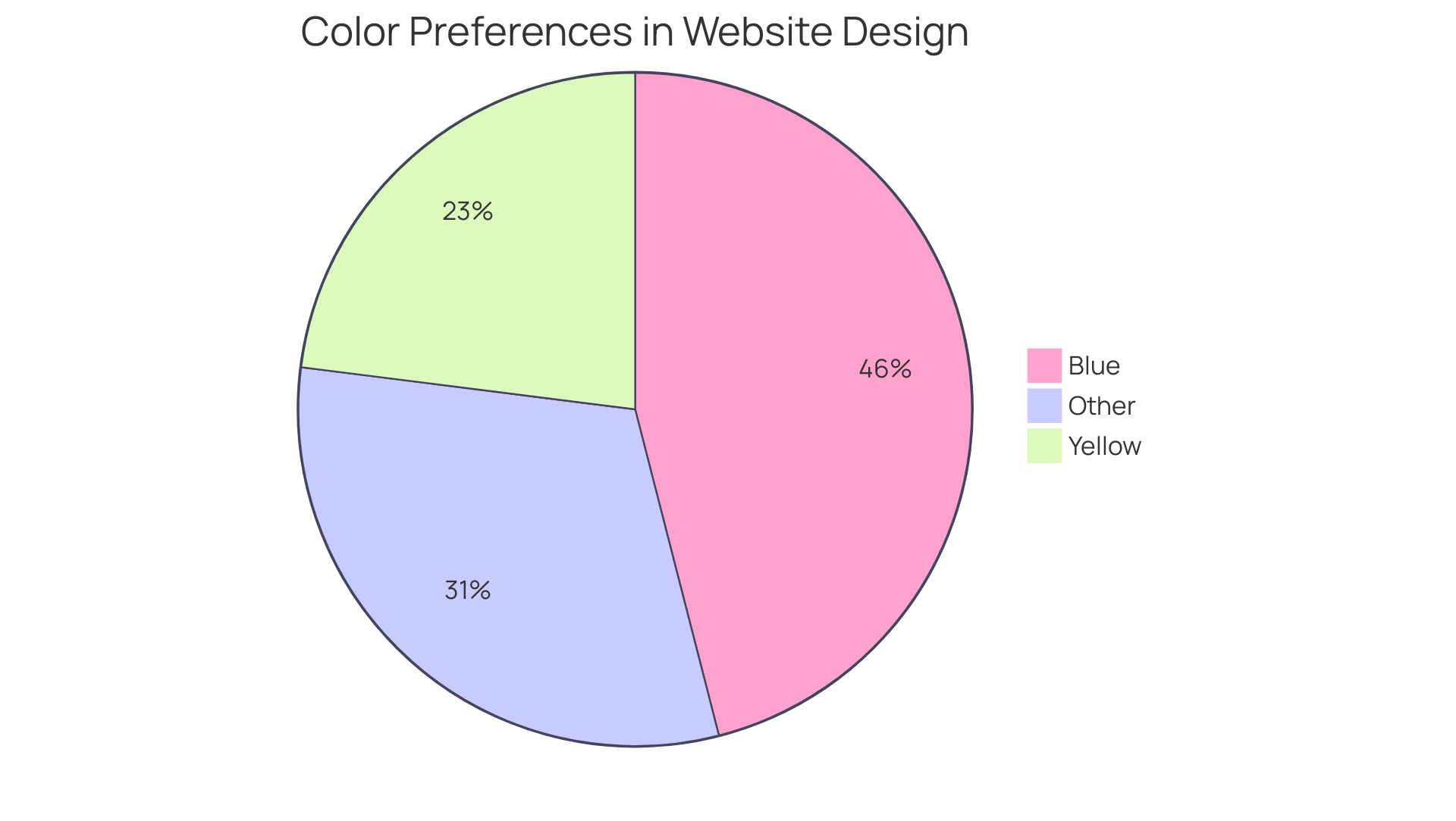
Sustainable and Accessible Design: The Future of Web Development
The trajectory of web development is increasingly centered on sustainable and accessible practices that emphasize inclusivity and environmental stewardship. By 2025, the latest trends in website design indicate that integrating eco-friendly materials and optimizing performance will become standard, significantly reducing energy consumption. It is noteworthy that the eCommerce industry incurs losses of approximately $1.420 trillion due to inadequate experience, with a staggering cart abandonment rate of 75.6%, underscoring the necessity of effective design.
Furthermore, accessibility features, including screen reader compatibility and adaptable layouts, play a critical role in ensuring that all individuals, irrespective of their abilities, can navigate and interact with web content effectively. As Maria Harutyunyan aptly states, the best real estate SEO firms are selected based on:
- Reviews
- Niche expertise
- Industry awards
- More
This reflects the growing emphasis on user-centric creation, which enhances brand reputation and is in line with the latest trends in website design, fostering a positive societal impact.
Additionally, with 46% of users preferring blue in website design, it is clear that color preferences significantly influence user perception and design choices. By committing to these principles and considering effective strategies such as those outlined in the case study on creating a successful blogger outreach program, businesses can position themselves as leaders in both the digital landscape and their respective industries.
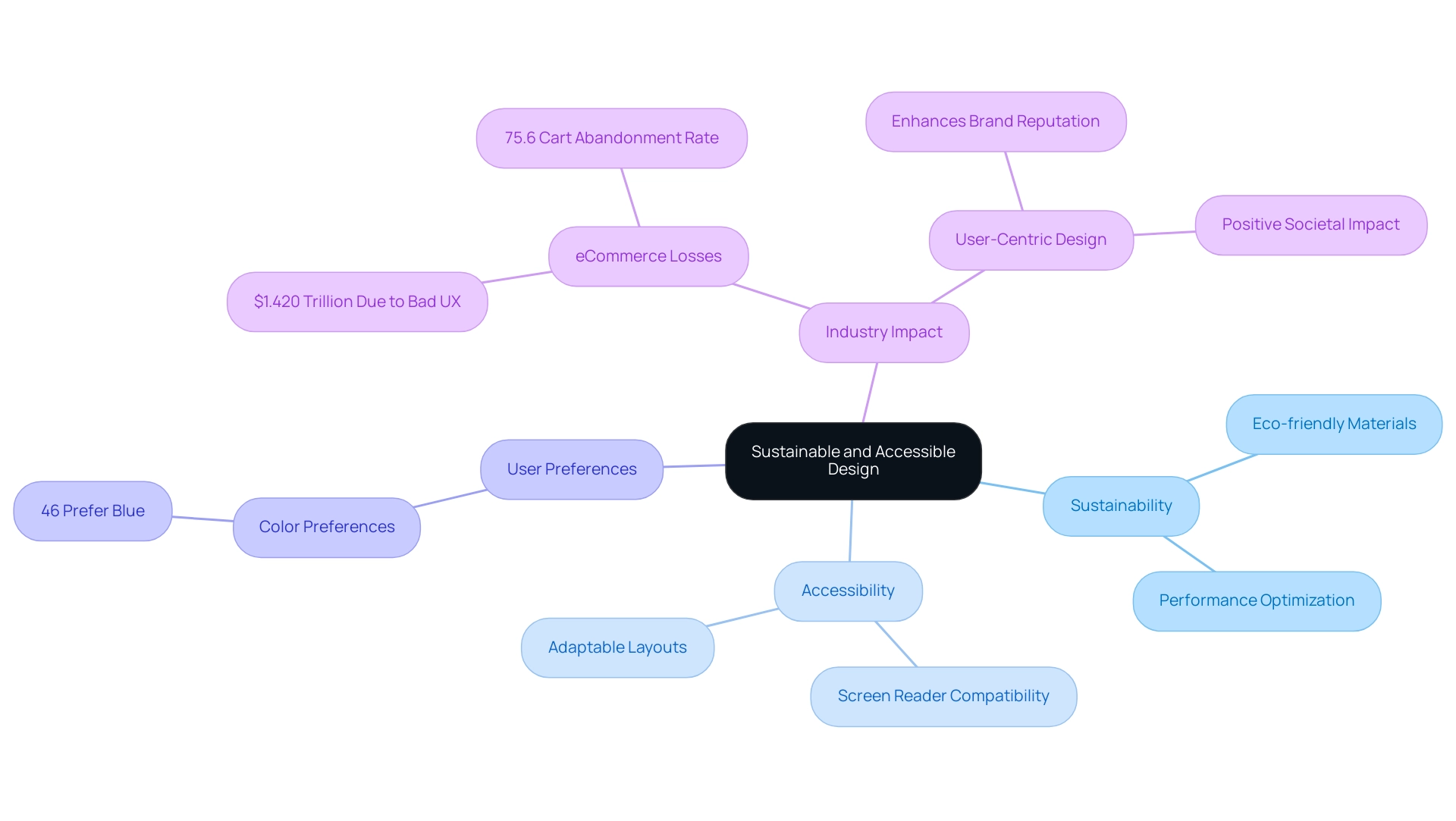
Conclusion
The web design landscape in 2025 is set to undergo significant transformation, driven by innovative visual trends that prioritize user engagement and experience. Key elements such as:
- Floating objects
- Freeform finishes
- Bold typography
are reshaping how websites visually communicate and interact with users. Emphasizing mobile optimization and interactivity, designers are encouraged to adopt sophisticated micro animations and scrollytelling techniques that not only capture attention but also foster an immersive experience.
Color trends are also evolving, with vibrant palettes and gradient schemes taking center stage. The impact of color psychology cannot be understated; preferences for specific hues can greatly influence user engagement and brand perception. By leveraging tools to create harmonious color combinations, designers can enhance visual appeal while ensuring that their websites resonate with target audiences.
Moreover, the commitment to sustainable and accessible design practices is becoming essential for modern web development. As businesses strive to reduce their environmental footprint and enhance user inclusivity, integrating eco-friendly materials and accessible features will not only improve user experience but also strengthen brand reputation. This holistic approach to web design positions businesses to thrive in an increasingly competitive digital landscape.
In summary, embracing these trends and principles will empower designers and businesses to create compelling, user-centric websites that not only attract visitors but also foster loyalty and engagement. As the digital world continues to evolve, staying ahead of these trends will be crucial for success in 2025 and beyond.

